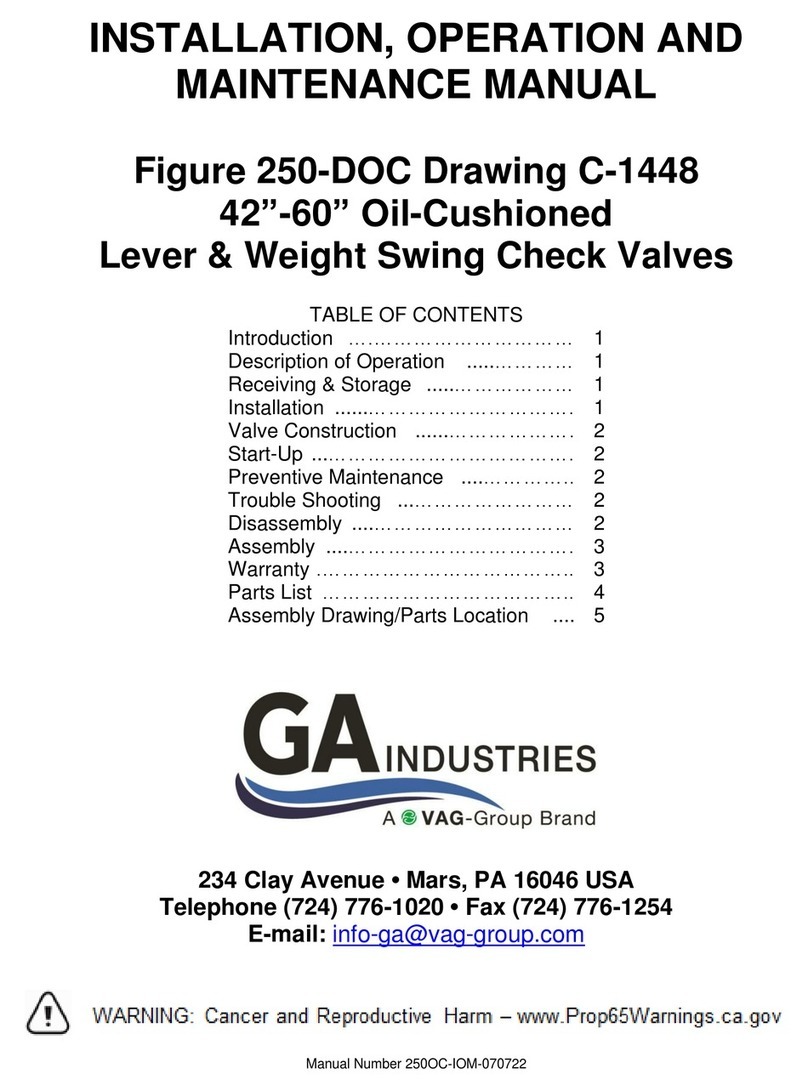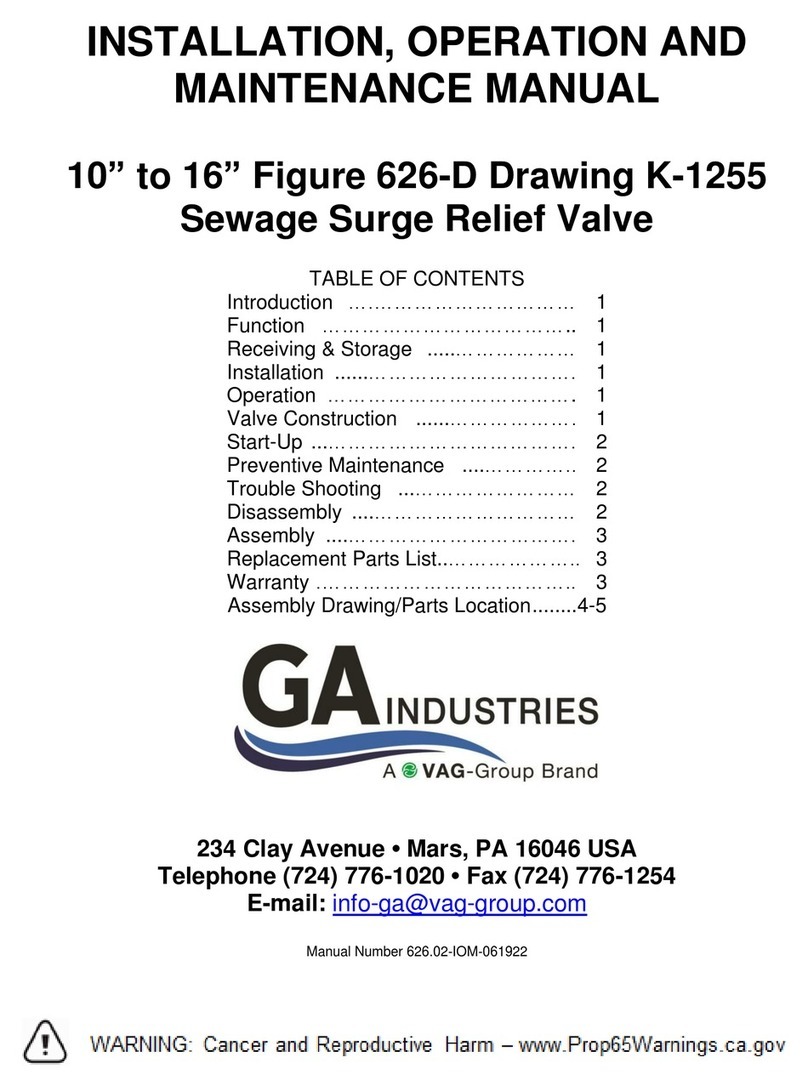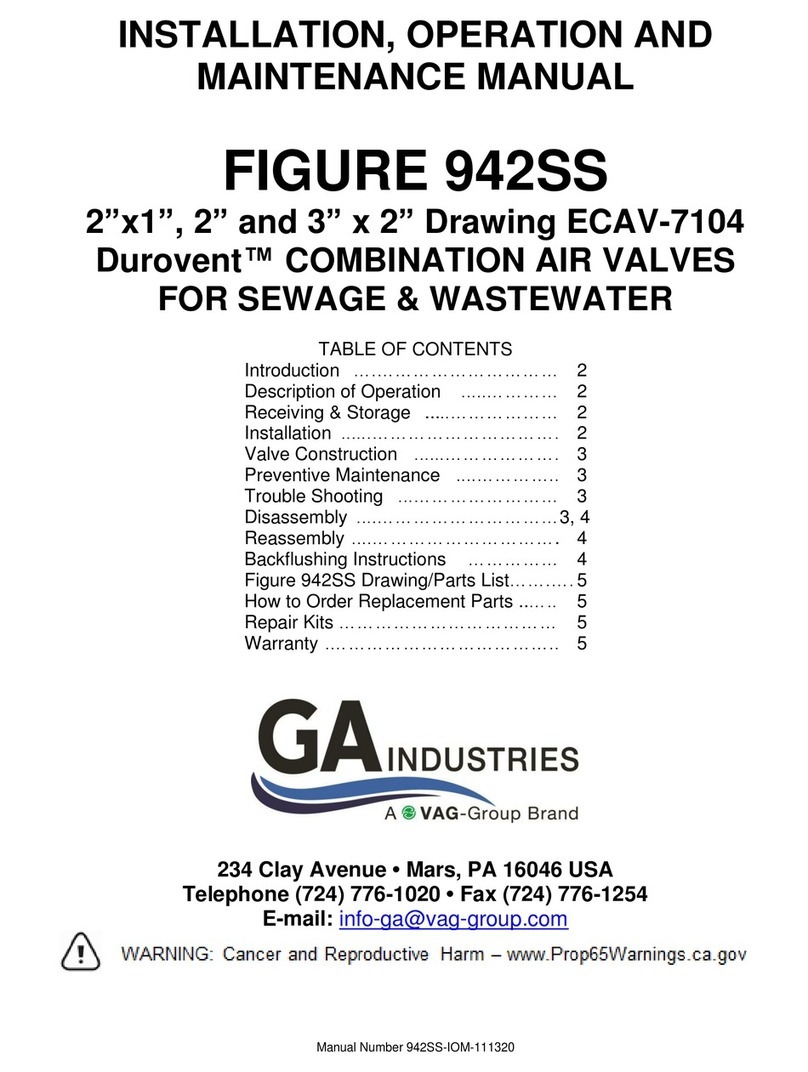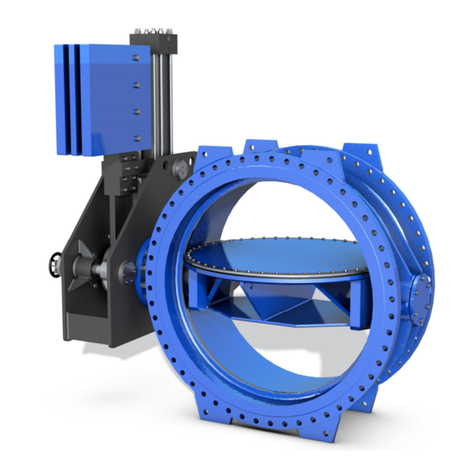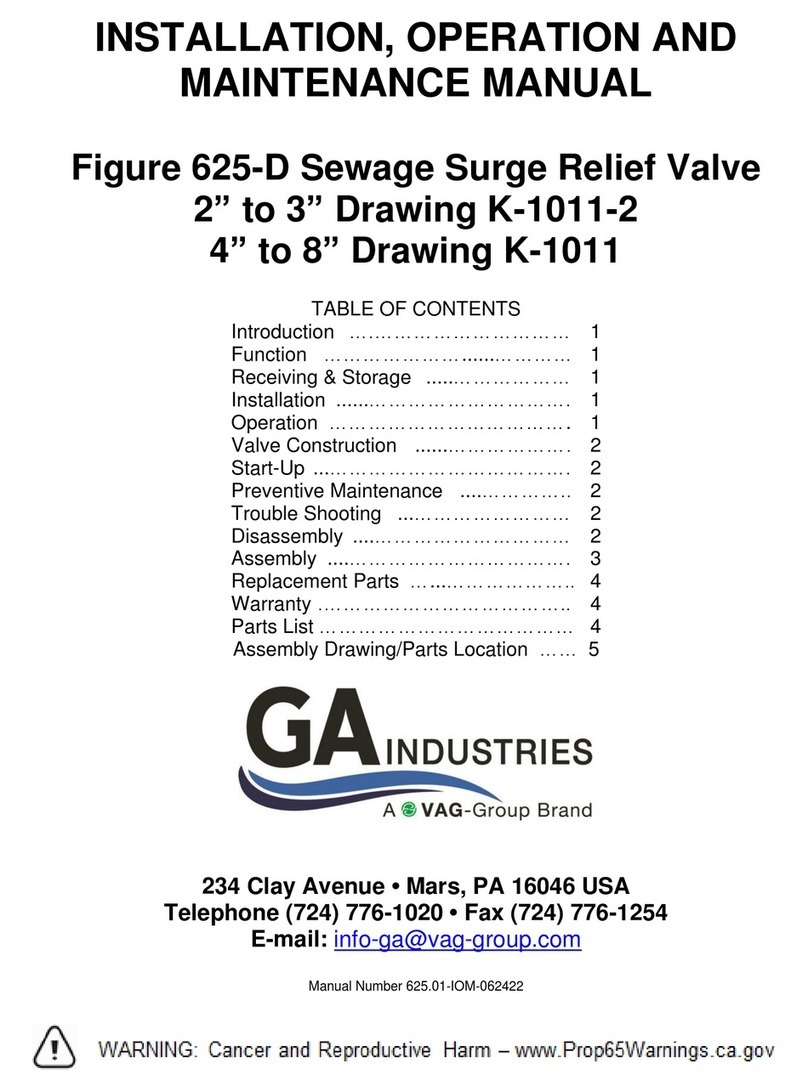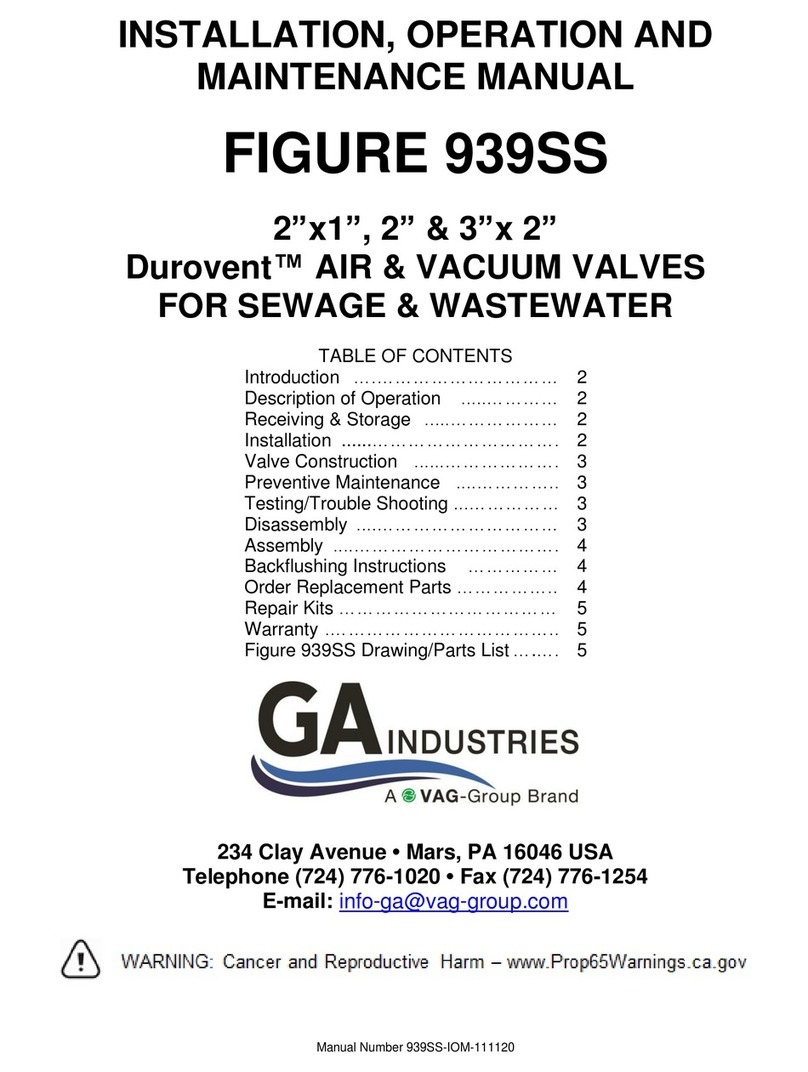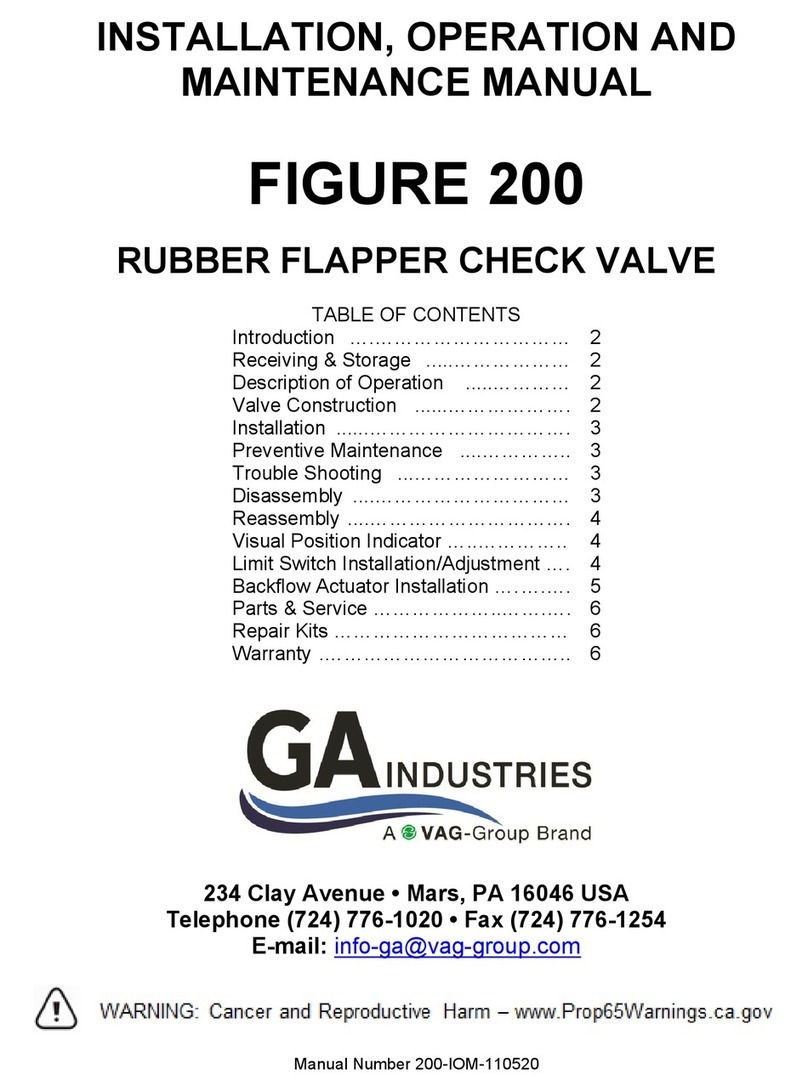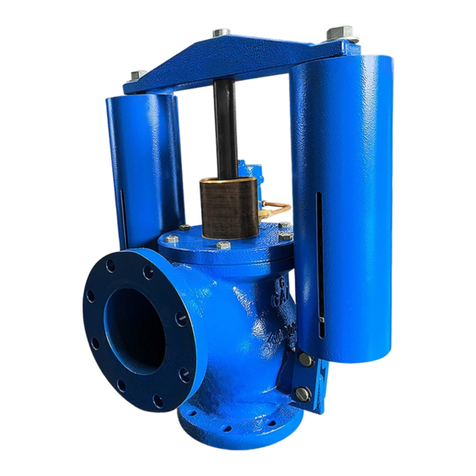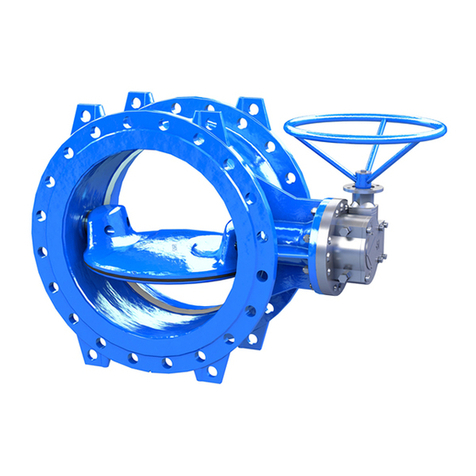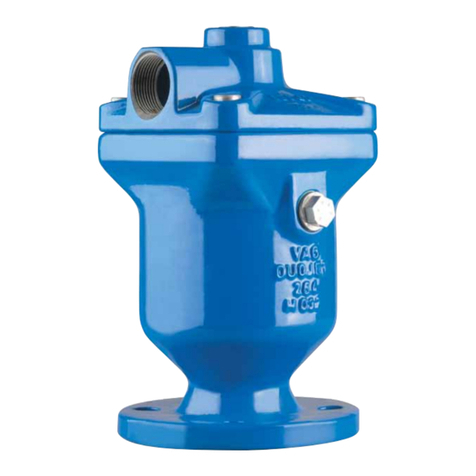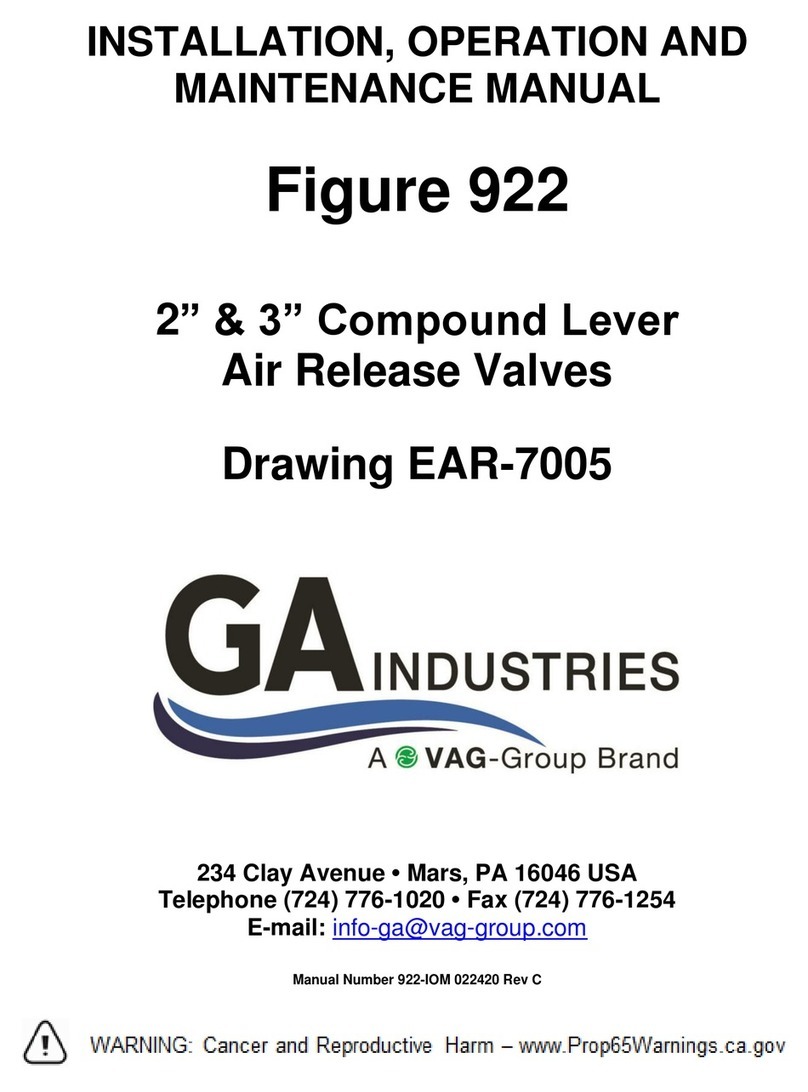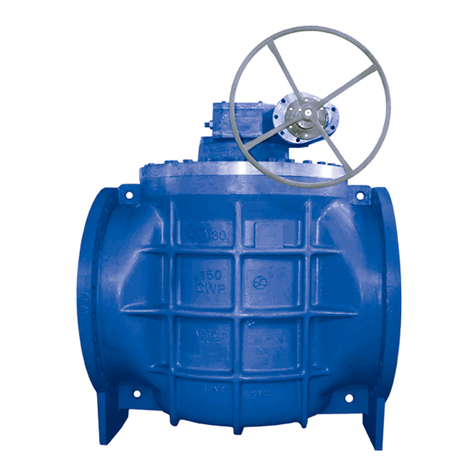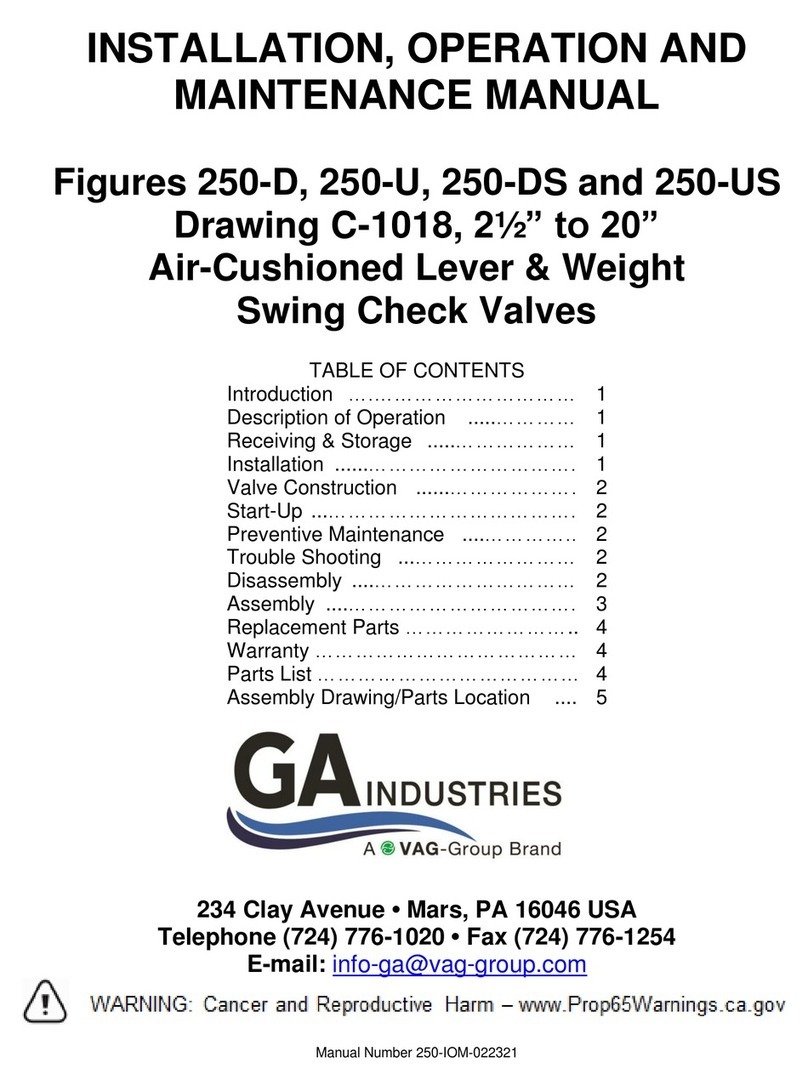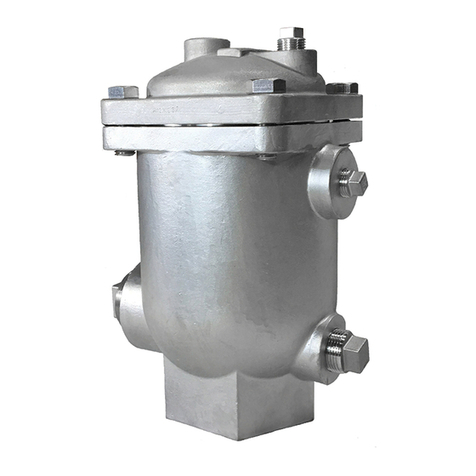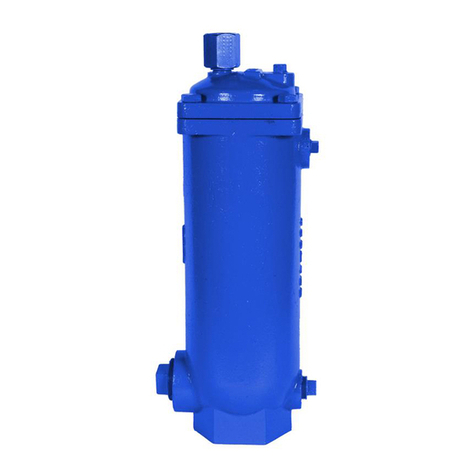INSTALLATION, OPERATION and
MAINTENANCE
Figures 930-D, 930-U Air & Vacuum Valves
INTRODUCTION
This manual will provide the information to
properly install, operate and maintain the valve
to ensure a long service life. The Figure 930 Air
& Vacuum Valve is ruggedly constructed to
provide years of trouble-free operation with
minimal maintenance.
These Air & Vacuum Valves are not intended for
use with fluids containing suspended solids such
as wastewater and sewage. The GA Industries
Figure 935 Sewage Service Air & Vacuum
Valves are recommended for such applications.
CAUTION
The valve is NOT recommended for use with
toxic fluids, fuels or fluids containing hazardous
gases
The Shop Order (SO) Number, Figure Number,
size and pressure rating are stamped on a
nameplate attached to the valve. Please refer to
the SO number when ordering parts.
DESCRIPTION OF OPERATION
The Figure 930 Air & Vacuum Valve allows air
that is being pushed ahead of the incoming fluid
to escape and ensure a complete filling of the
pipeline or vessel. Once the air has been
exhausted and the system is pressurized the
valve closes tight. It does not re-open unless
and until the system is drained and/or a negative
pressure condition occurs within the pipe or
vessel in order to admit air to minimize the
vacuum condition.
The Figure 930 employs the Kinetic aero-
dynamic operating principle to ensure the valve
is not prematurely blown shut by the high
velocity exiting air.
RECEIVING AND STORAGE
Inspect the valve upon receipt for damage
during shipment. Carefully unload all valves to
the ground without dropping. Do not pick up the
valve by the “cowl.” The valves should remain in
a clean, dry and weather protected area until
installed. For long term storage (greater than 6
months) the rubber surfaces of the seat should
be coated with a non-toxic lubricant such as
"SuperLube" made by Synco Chemical. Do not
expose the rubber parts to sunlight or ozone.
INSTALLATION
Figure Numbers suffixed with “D” (e.g., 930-D)
indicate the valve has ANSI Class 125 flanged
pipeline connection. Figure Numbers suffixed
with “U” (e.g., 930-U) indicate the valve has
ANSI Class 250 flanged pipeline connection.
Sizes 10” & 12”Figure Numbers 930-D and 930-
U are standard with an outlet cowl, indicated by
a “C” (e.g., 930-DC). In lieu of a cowl, the valve
can be supplied with an ANSI Class 125 flanged
outlet connection, indicated by a “J” (e.g., 930-
UJ).
Consult the drawings of record to verify the
configuration supplied and installed.
The valve must be installed in an upright vertical
orientation, normally at a high point in the
system.
If installed outdoors, below ground in a vault or
in an unheated area, adequate freeze protection
must be provided. Some discharge of water
may occur just prior to valve closure. If installed
indoors or in a vault, the valve outlet should be
directed to an adequate drain.
An isolating valve should be installed between
the valve and the pipeline or system to facilitate
maintenance.
Carefully screw threaded end valves onto pipe
nipple using compatible thread sealant. Tighten
valve using wrench flats. DO NOT OVER-
TIGHTEN.
Flat-faced flanged valves should be mated with
flat-faced flanges and full-face gaskets. If ring
